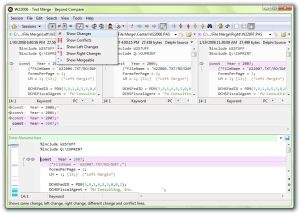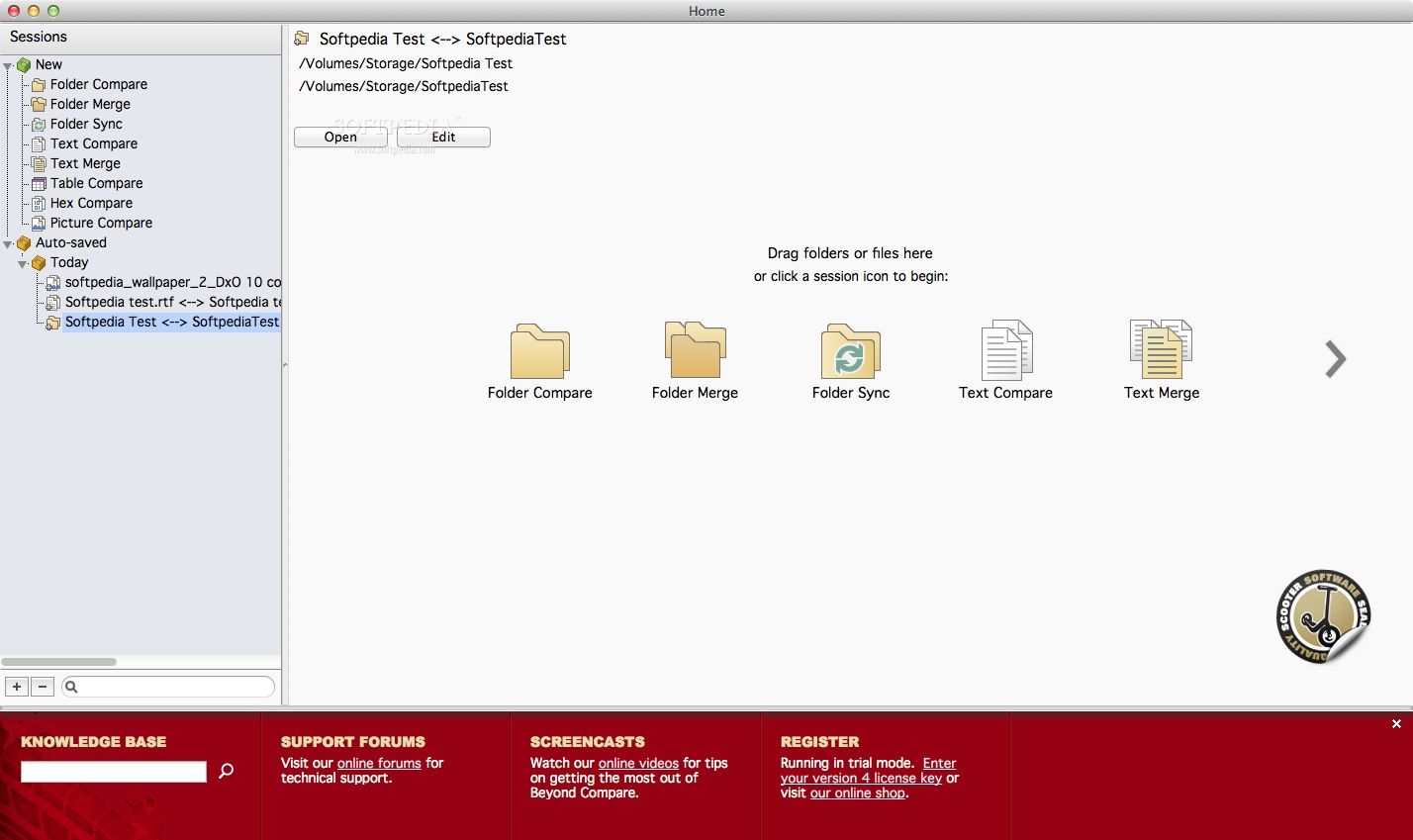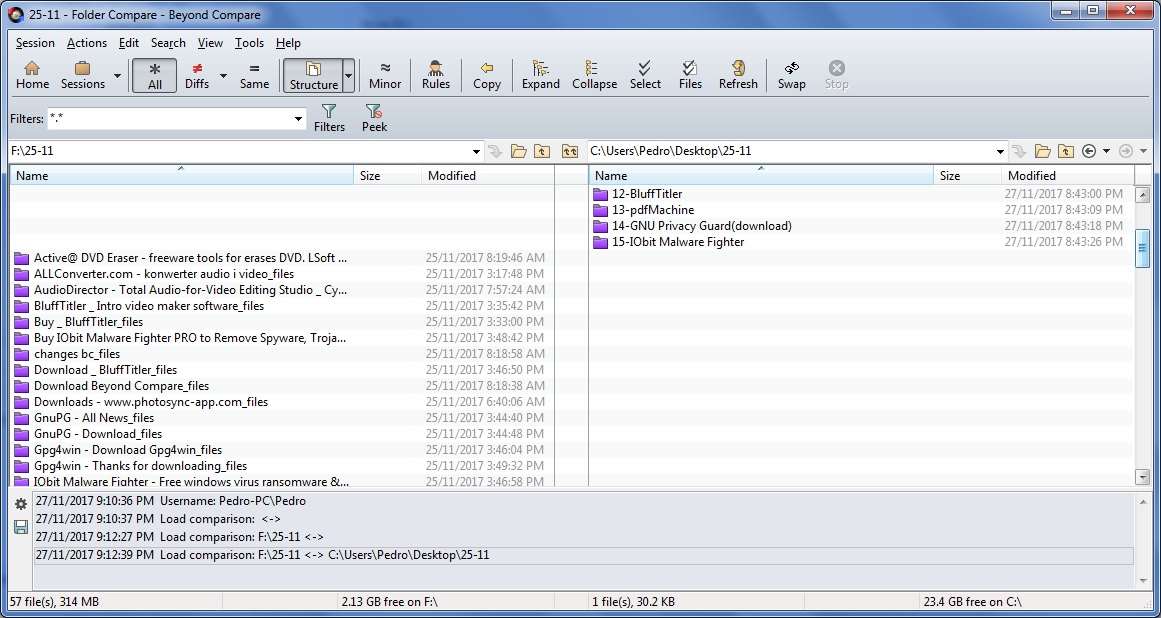

="C:\Program Files (x86)\Microsoft Visual Studio\2019\Professional\Common7\IDE\CommonExtensi ons\Microsoft\TeamFoundation\Team Explorer\vsdiffmerge.exe" "$REMOTE" "$LOCAL" "$BASE" "$MERGED" //mĭifftool.bc.path=c:/Program Files/Beyond Compare 4/bcomp.exe Http.sslcainfo=C:/Program Files/Git/mingw64/ssl/certs/ca-bundle.crtĭ="C:\Program Files (x86)\Microsoft Visual Studio\2019\Professional\Common7\IDE\CommonExtensi ons\Microsoft\TeamFoundation\Team Explorer\vsdiffmerge.exe" "$LOCAL" "$REMOTE" //t Git config -global mergetool.keepBackup false Git config -global mergetool.bc.path "c:/Program Files/Beyond Compare 4/bcomp.exe" Git config -global difftool.bc.path "c:/Program Files/Beyond Compare 4/bcomp.exe"



I followed these instructions from the Beyond Compare website: Im using Beyond Compare integrated with Visual Studio 2015 as my Compare/Merge tool. Here's the scenario: In Visual Studio 2022, I do a Git Pull and it tells me I have a merge conflict I double-click the filename and Beyond Compare opens a 3-way merge, but the common ancestor is in the left window, local changes in center, and incoming changes in right. How do I configure the center window to be the common ancestor? Step3: Configure settings as shown in the image. > Source Control -> Visual Studio Team Foundation Server -> Configure User Tools. The problem is the center window is not the common ancestor. Take the below steps to resolve the issue. Beyond Compare 64bit Version 4.4.3 build 26655.
#VISUAL STUDIO BEYOND COMPARE WINDOWS#
I have Visual Studio 2022 and Git for Windows (git version 2.37.1.windows.1). Once you have saved your edits, you should now see Visual Studio getting launched when calling git mergetool and git difftool.I'm using Beyond Compare to do a 3-way merge. You will need to make the following edits/additions to this file, but two things to note: 1) recommend backing up your original prior to doing so, and 2) the path to vsdiffmerge.exe will be different if you are using 2012 or installed VS in another drive/folder: Ĭmd = '"C:/Program Files (x86)/Microsoft Visual Studio 12.0/Common7/IDE/vsdiffmerge.exe"' "$LOCAL" "$REMOTE" //tĬmd = '"C:/Program Files (x86)/Microsoft Visual Studio 12.0/Common7/IDE/vsdiffmerge.exe"' "$REMOTE" "$LOCAL" "$BASE" "$MERGED" //mįor further explanation of making customized changes to your git global config refer to the following Once you find the file, open it with your favorite editor (e.g., Notepad, Notepad++, Sublime Text, Visual Studio, etc.). If you are Windows Vista or higher, this will be at C:\Users.gitconfig (if you don’t see it, you may need to show hidden files in your folder options). Next you need to find your git global config file to wire up VS as your merge tool. It should be located within the Visual Studio installation folder, by default this should be (change 12.0 to 11.0 for VS 2012):Ĭ:/Program Files (x86)/Microsoft Visual Studio 12.0/Common7/IDE/vsdiffmerge.exe The first thing you need to do is locate where your VS DiffMerge Tool is (NOTE: I believe this only exists for Visual Studio 20). Once I got it working, I haven’t turned back.
#VISUAL STUDIO BEYOND COMPARE HOW TO#
A 3-way tool that doesn’t look like it came from 1998, is in my IDE of choice, and is easy to use… perfect! So I set out looking for how to access the 3-way merge exe that Visual Studio used and how to wire it up to work with Git. I had heard good things about Beyond Compare but it’s not free, so I ended up going with Perforce P4V.Īfter using P4V for a while, I saw a teaser that TFS Online was going to support Git and in that video happen to see a demo using Visual Studio to perform 3-way merges. I Google’d around and came back with KDiff3, SourceGear Diff Merge, Perforce P4V, and Beyond Compare. When I first started using Git, I quickly found out I needed to wire up a third party visual merge tool for handling conflicts (merging in the console was just too cool for me).


 0 kommentar(er)
0 kommentar(er)
